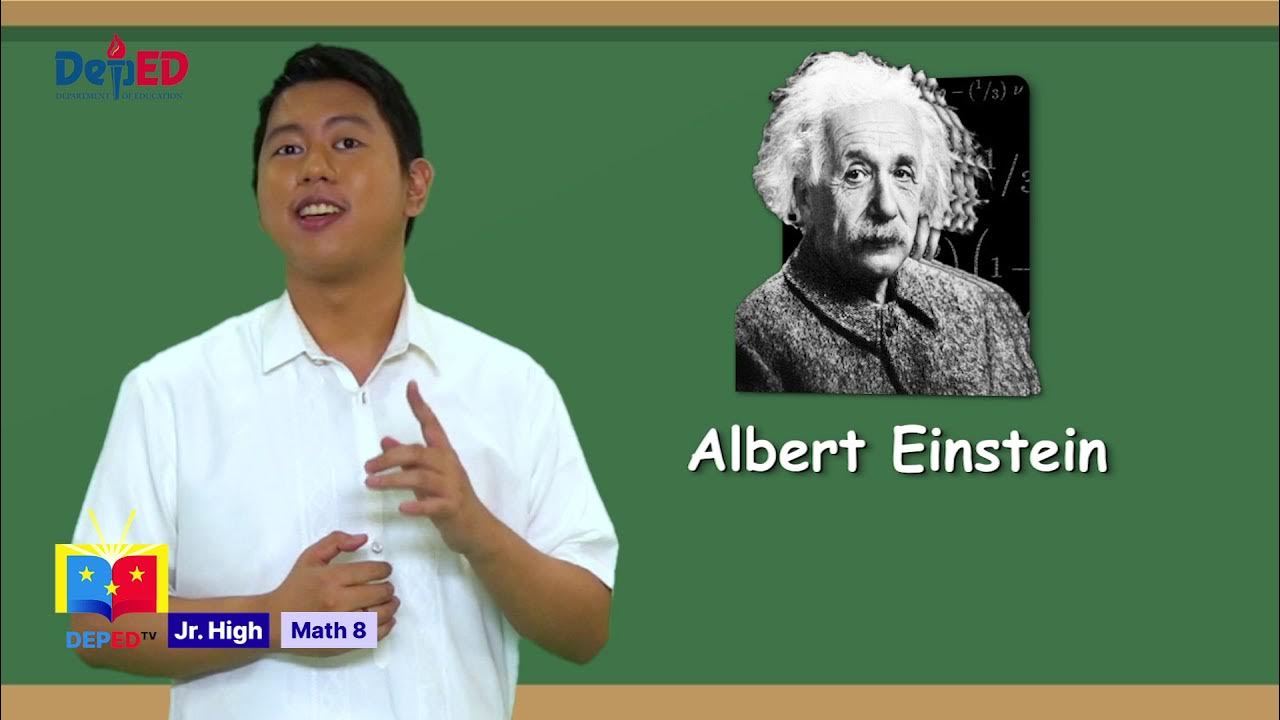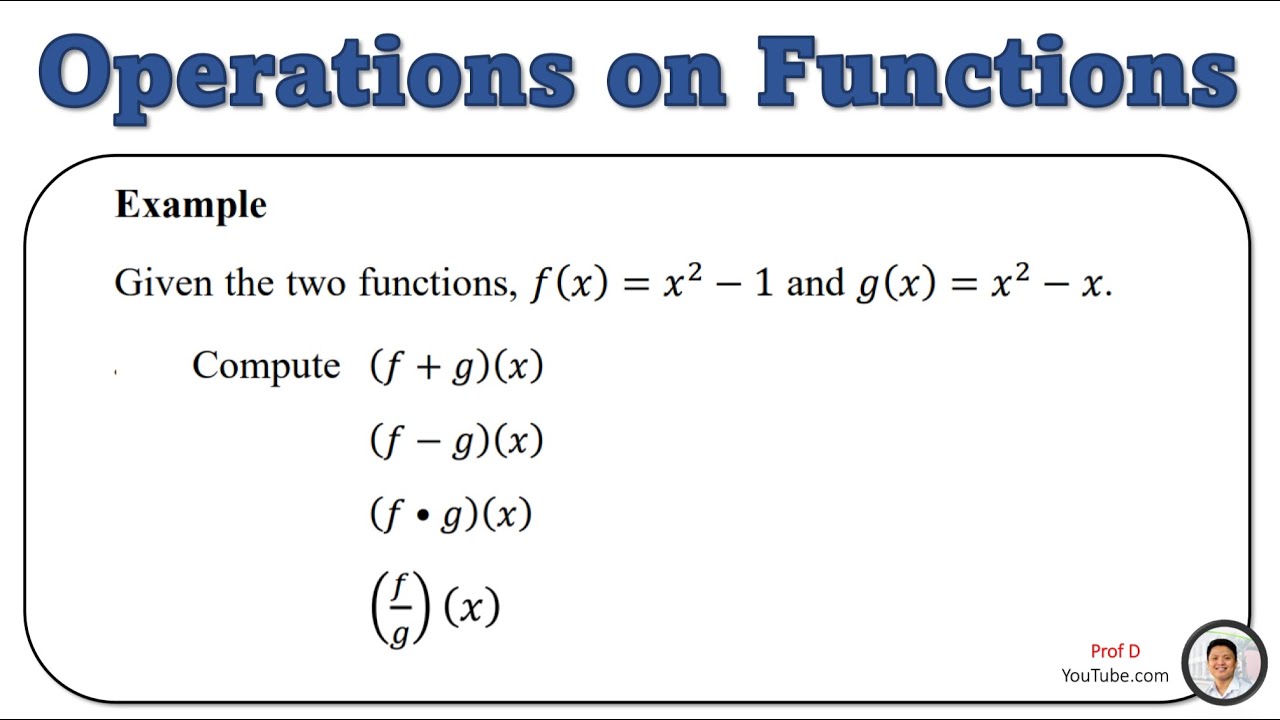SHS General Mathematics Q1 Ep2: Rational Functions
Summary
TLDRIn this episode of Deaf Ed TV, Teacher Carol introduces Grade 11 students to the concept of rational functions in mathematics. Through a brain teaser involving Roman numerals, she piques students' interest and emphasizes the importance of rational thinking. The lesson covers identifying rational equations, inequalities, and functions, solving them, and applying these concepts to real-life scenarios like time management for distance learning. Carol guides students through creating a table of values, graphing, and determining the domain and range of a rational function, encouraging active participation and reinforcing the idea that effort leads to learning.
Takeaways
- 😀 The video is an educational resource for grade 11 general mathematics, focusing on rational expressions, equations, and inequalities.
- 🧠 A brain teaser involving Roman numerals is used to engage viewers and illustrate the concept of rational expressions.
- 📚 The importance of rational thinking and its biblical reference is highlighted, emphasizing the use of reason and understanding in mathematics.
- 🔢 Rational equations are defined as equations containing rational expressions, and examples are provided to illustrate this concept.
- 📉 Rational inequalities are inequalities that contain rational expressions, and the video demonstrates how to solve them.
- 📈 Rational functions are functions where the output is the ratio of two polynomials, and the video explains how to represent them.
- 📑 The video includes practical examples, such as representing the time a student must allocate to each subject in a distance learning scenario.
- 📈 The process of creating a table of values for a rational function is demonstrated, showing how to calculate y-values for given x-values.
- 📊 The video guides viewers through plotting points and graphing a rational function, providing a visual representation of the function.
- 📋 The domain and range of a rational function are discussed, with the video explaining how to determine these based on the function's characteristics.
- 💬 The video concludes with an invitation for students to reflect on their learning and share their insights using a specific hashtag.
Q & A
What is the main objective of the lesson in this video?
-The main objective of the lesson is to teach students about rational functions, equations, and inequalities, and how to solve and represent them using tables, graphs, and equations.
How is a rational equation defined in the video?
-A rational equation is defined as an equation that contains one or more rational expressions on one or both sides of the equation.
What distinguishes a rational inequality from a rational equation?
-A rational inequality contains inequality symbols (such as greater than, less than, etc.) along with rational expressions, while a rational equation contains an equal sign.
How can you solve a rational equation according to the video?
-To solve a rational equation, you can cross multiply the terms and then use properties of equality to solve for the variable.
What is the importance of ensuring the denominator in a rational function is not equal to zero?
-Ensuring the denominator is not equal to zero is important because a zero denominator makes the value of the rational function undefined.
What is the process for solving a rational inequality presented in the video?
-The process involves isolating the rational expression on one side, finding meaningful numbers by setting the numerator and denominator to zero, and then testing intervals on a number line to find the solution set.
How do you represent a real-life situation using a rational function as shown in the video?
-A real-life situation can be represented using a rational function by identifying the total quantity (like time or money) and dividing it by the number of parts (like subjects or expenses), forming a ratio.
What steps are involved in graphing a rational function as demonstrated in the video?
-To graph a rational function, you first create a table of values by substituting different x-values into the function, plot the points on a graph, and then connect the points to form the curve of the rational function.
How do you find the domain and range of a rational function based on the video explanation?
-The domain is found by determining where the denominator is not equal to zero, and the range is found by determining the domain of the inverse of the function, ensuring the denominator is also not zero.
What motivational message does Teacher Carol share with the students?
-Teacher Carol encourages students by reminding them that they are doing a good job as long as they make an effort to learn, and that their efforts are important for growing their skills and knowledge.
Outlines

Этот раздел доступен только подписчикам платных тарифов. Пожалуйста, перейдите на платный тариф для доступа.
Перейти на платный тарифMindmap

Этот раздел доступен только подписчикам платных тарифов. Пожалуйста, перейдите на платный тариф для доступа.
Перейти на платный тарифKeywords

Этот раздел доступен только подписчикам платных тарифов. Пожалуйста, перейдите на платный тариф для доступа.
Перейти на платный тарифHighlights

Этот раздел доступен только подписчикам платных тарифов. Пожалуйста, перейдите на платный тариф для доступа.
Перейти на платный тарифTranscripts

Этот раздел доступен только подписчикам платных тарифов. Пожалуйста, перейдите на платный тариф для доступа.
Перейти на платный тарифПосмотреть больше похожих видео

Grade 8 Math Q1 Ep 6 Simplifying Rational Algebraic Expressions

SHS General Mathematics Q1 Ep1: Function

Grade 8 English Q1 Ep 8 Types of Transition Signals

SHS Philosophy Q1 Ep1: Introduction to the Philosophy of the Human Person

Grade 10 Physical Education Q1 Ep2: Proper Nutrition and Exercise

Grade 11 | Operations on Functions | General Mathematics
5.0 / 5 (0 votes)
